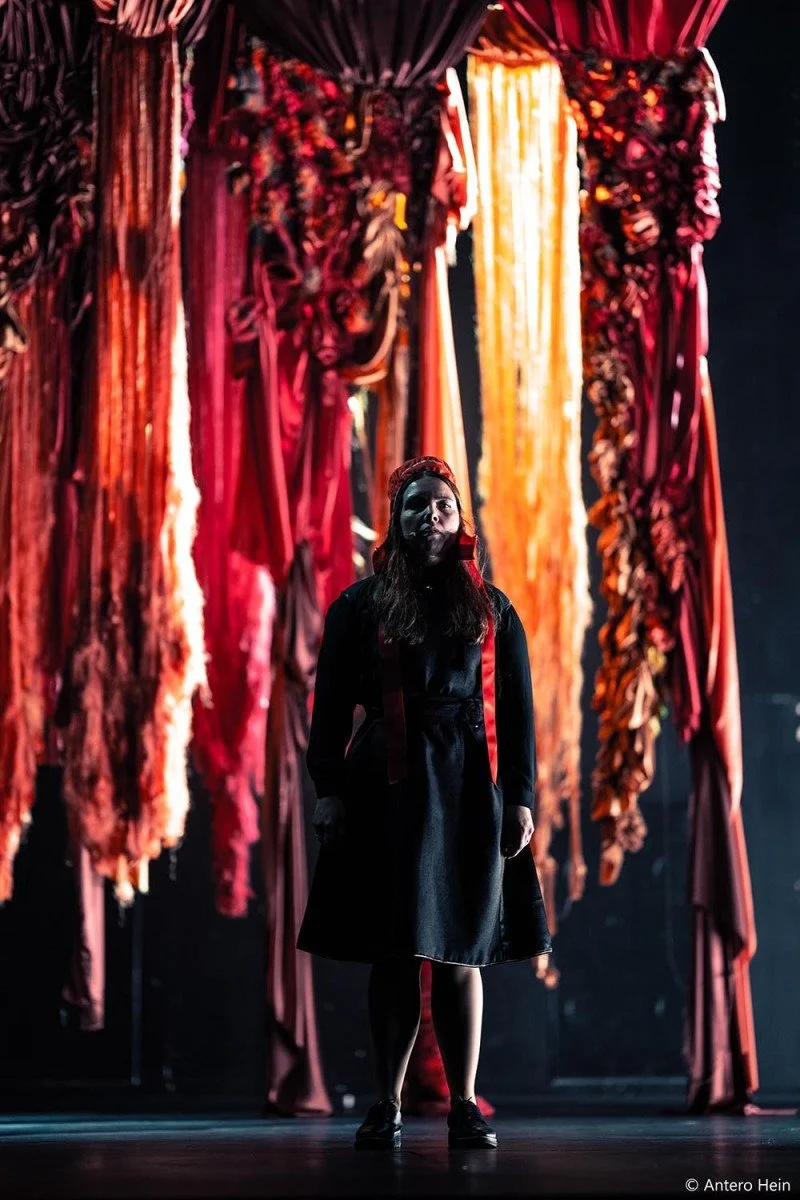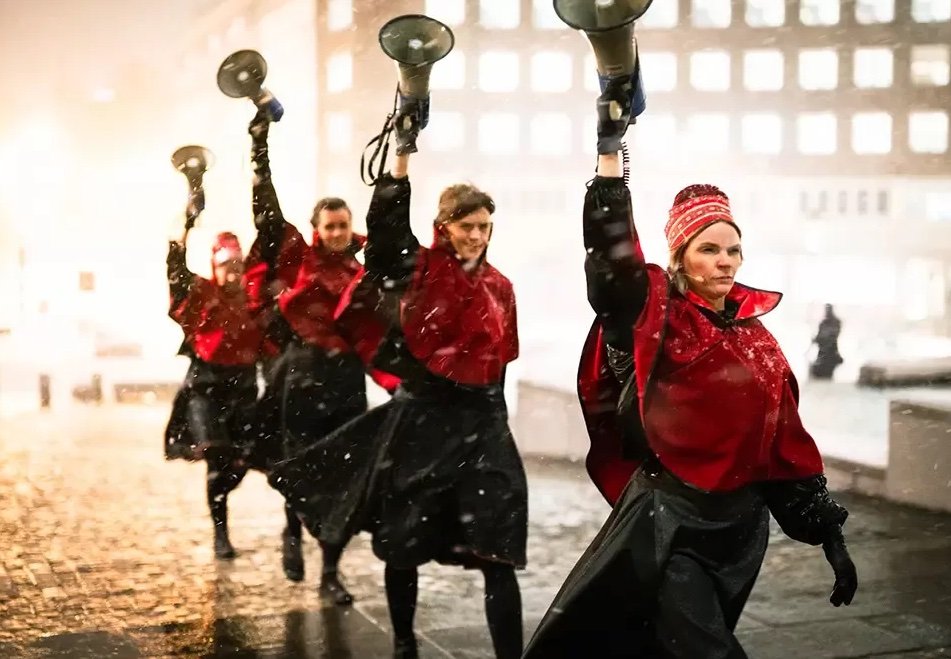Dance review: Mesmerizing Sámi voices drive Elle Sofe Sara work—inside and outside Vancouver Playhouse
Contemporary-dance show claims space, shepherds audiences in Vástádus eana – The answer is land.
Photo by Lars Opstad.
Photo by Antero Hein.
DanceHouse and Dancers of Damelahamid present Vástádus eana – The answer is land at the Vancouver Playhouse to February 24
AS THE VOICES of seven women echoed over the šxʷƛ̓exən Xwtl’a7shn Queen Elizabeth Theatre plaza through megaphones, even the boisterous crowd on the Browns Social House patio came to a curious quiet. All attention was on the traditional Sámi joiking: the form of ululating singing distinct to the Indigenous culture of northern Europe and Russia.
The moving power of this outdoor opening to the show Vástádus eana – The answer is land was that it was a simple act of being heard and claiming space.
Like Canada’s Indigenous people, the Sámi have suffered more than a century of attempts to silence their culture, via residential schools, language suppression, the banning of curved red hats that the dancers donned here, and the outlawing of traditions like joiking (“yoiking” in English). But with their megaphones and contemporary black costumes, the women on the plaza were also making what felt like a larger call to solidarity.
From there, the performers shepherded the audience into the Vancouver Playhouse via the back stage door, past the exquisite set of massive knitted, knotted, and sewn fabrics that dangled from the ceiling—artful odes to handiwork. (It was a meaningful entrance for a show so rooted in a nomadic culture that has herded reindeer for more than a thousand years.) Through gorgeous lighting techniques, the textile sculptures shifted throughout the production from sepia to pink and orange to rich reds and golds.
This was not showy, supercharged dance. Neither was it folk dance: as choreographer Elle Sofe Sara told Stir in an interview from her home in the far reaches of Norway’s arctic north, the Sámi have no traditional dances—or at least none that survived Christianization. Instead, like the joiking, much of the movement centres on claiming space: earthbound, the women stamping the floor in their black, thick-soled combat-boot-sneaker hybrids, their voices resounding—sometimes through small wireless microphones, sometimes layering and altering through the bullhorns. (The megaphone is an instantly recognizable device from Sámi protests in Sara’s homeland—but clearly also a reference to larger rallying against climate change and for social-justice movements of the 2020s.) From that almost march-like movement, beautifully sculptural duos and trios broke out—moments of suffering, but also scenes of support and lifting up.
But it was the haunting polyphony of joiking, composed by Frode Fjellheim, that drove the entire show. In traditional Sámi culture, joiking expresses people's relationship to others and to nature. In the context of Vástádus eana, it was, by turns, cathartic, assertive, and healing. Like the throat-singing of the Inuit, it holds a transcendent yet quiet power all its own—and it has a unique way of making people sit still and listen. This is a rare chance for Vancouverites to experience it. Those who did won't soon forget it. ![]()
Photo by Lars Opstad.















